Themed collection David Sherrington Commemorative Issue

David Sherrington commemorative issue
Peter Cormack and David Haddleton introduce this David Sherrington commemorative issue for Polymer Chemistry.

Polym. Chem., 2015,6, 7228-7230
https://doi.org/10.1039/C5PY90152A
Hypercrosslinked materials: preparation, characterisation and applications
Hypercrosslinked materials have experienced a great expansion in both the synthetic approach and the field of applications.
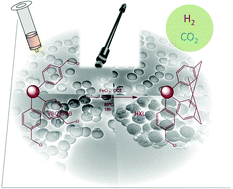
Polym. Chem., 2015,6, 7231-7244
https://doi.org/10.1039/C5PY00771B
Tuneable pH-regulated supramolecular copolymerisation by mixing mismatched dendritic peptide comonomers
The co-assembly of oppositely charged phenylalanine-rich dendritic comonomers yields supramolecular alternating copolymers, whose stability and pH-triggered disassembly is tuned by mismatching a strong with a weak β-sheet encoded comonomer.

Polym. Chem., 2015,6, 7245-7250
https://doi.org/10.1039/C5PY01241D
Facile synthesis of a conjugated microporous polymeric monolith via copper-free Sonogashira–Hagihara cross-coupling in water under aerobic conditions
Facile thiol–yne chemistry on a porous polymer monolith: the sulfur donors thus installed effectively take up Ag(I) ions, allowing for the catalysis of heterocyclization reaction in the solid phase.
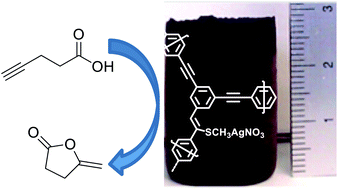
Polym. Chem., 2015,6, 7251-7255
https://doi.org/10.1039/C5PY00772K
Facile and cost-effective branched acrylic copolymers from multifunctional comonomers and multifunctional chain transfer agents
Branched acrylic copolymers were synthesised via facile conventional free-radical polymerisations taken to high conversion using comonomers containing 2-6 acrylate functional groups and chain transfer agents containing 1-8 thiol functional groups.
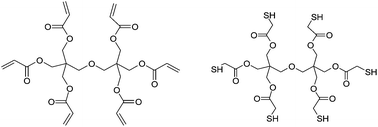
Polym. Chem., 2015,6, 7333-7341
https://doi.org/10.1039/C5PY01179E
Efficient and selective molybdenum based heterogeneous catalyst for alkene epoxidation using batch and continuous reactors
A polystyrene 2-(aminomethyl)pyridine supported molybdenum(VI) complex (Ps·AMP·Mo) has been prepared, characterised and used as a catalyst for epoxidation of 1-hexene and 4-vinyl-1-cyclohexene (4-VCH) using TBHP as an oxidant.

Polym. Chem., 2015,6, 7308-7319
https://doi.org/10.1039/C5PY01147G
Insights into the formation, structural properties and performance of RAFT polymerized L-phenylalanine anilide molecularly imprinted polymers
The enhanced performance of molecularly imprinted polymers prepared by controlled radical polymerization in terms of affinity, selectivity, capacity and mass transfer properties is shown here to correlate with pore structure parameters in their dry and swollen states.
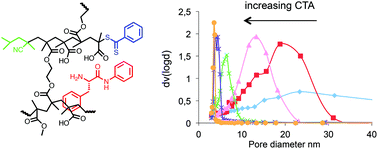
Polym. Chem., 2015,6, 7320-7332
https://doi.org/10.1039/C5PY01318F
Molecular design of a discrete chain-folding polyimide for controlled inkjet deposition of supramolecular polymers
Herein we describe the generation of a well-defined polyimide to afford coloured supramolecular polymer assemblies with electronically complementary pyrenyl terminated polymers which can be inkjet printed.
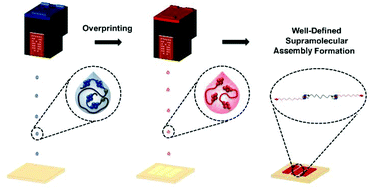
Polym. Chem., 2015,6, 7342-7352
https://doi.org/10.1039/C5PY00622H
Well-defined colloidal crystal films from the 2D self-assembly of core–shell semi-soft nanoparticles
Silica core–polymer shell particles are obtained from surface mediated RAFT polymerisation and assembled into ordered 2D colloidal crystals.
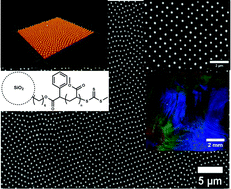
Polym. Chem., 2015,6, 7297-7307
https://doi.org/10.1039/C5PY00912J
Exploring the homogeneous controlled radical polymerisation of hydrophobic monomers in anti-solvents for their polymers: RAFT and ATRP of various alkyl methacrylates in anhydrous methanol to high conversion and low dispersity
RAFT and ATRP of nBuMA, tBuMA and MMA in anhydrous methanol (25–60 °C) without precipitation, yielding polymers with conversion up to 99%, Đ from 1.02 and DPn ≤ 800 units.
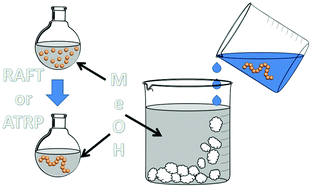
Polym. Chem., 2015,6, 7286-7296
https://doi.org/10.1039/C5PY00791G
Fully biodegradable and biocompatible emulsion templated polymer scaffolds by thiol-acrylate polymerization of polycaprolactone macromonomers
Polycaprolactone triacrylate is used to make fully biodegradable and biocompatible tissue engineering scaffolds by emulsion templating and thiol-acrylate photopolymerisation.
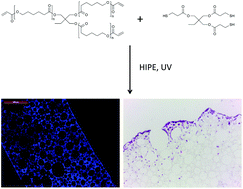
Polym. Chem., 2015,6, 7256-7263
https://doi.org/10.1039/C5PY00721F
The effect of molecular weight on the porosity of hypercrosslinked polystyrene
Microporous polymers can be prepared by crosslinking polystyrenes, with the surface areas being dependent on the degree of polymerisation.
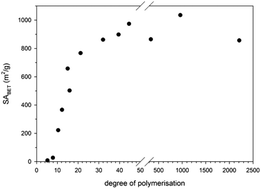
Polym. Chem., 2015,6, 7280-7285
https://doi.org/10.1039/C5PY00668F
Entropically-driven ring-opening metathesis polymerization (ED-ROMP) of macrocyclic olefins prepared from deoxycholic acid to give functionalized polymers
The macrocycles shown were prepared, then polymerized and copolymerized by ROMP. This gave polymers with free OH or free CO2R groups. Treatment of the polymers having R = t-Bu with trifluoroacetic acid gave polymers with free CO2H groups.

Polym. Chem., 2015,6, 7274-7279
https://doi.org/10.1039/C5PY00272A
Polysulfobetaine-based diblock copolymer nano-objects via polymerization-induced self-assembly
A zwitterionic polysulfobetaine-based macro-CTA is used for the synthesis of spheres, worms or vesicles via aqueous RAFT dispersion polymerization of 2-hydroxypropyl methacrylate (HPMA). These new diblock copolymer nano-objects exhibit high tolerance of added salt.
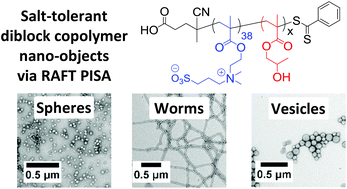
Polym. Chem., 2015,6, 7264-7273
https://doi.org/10.1039/C5PY00396B